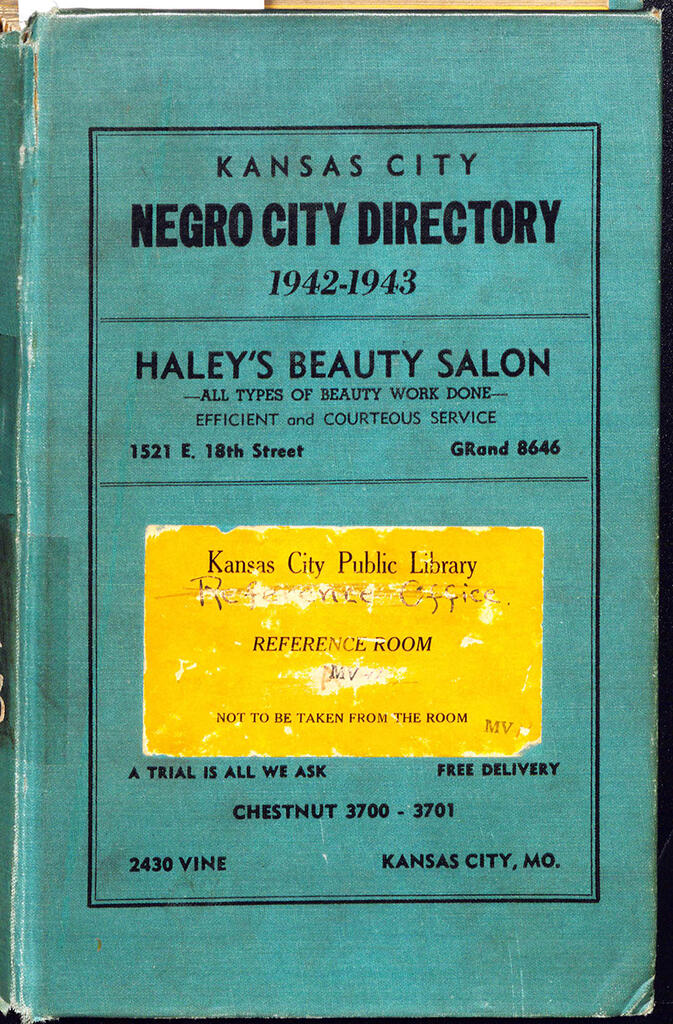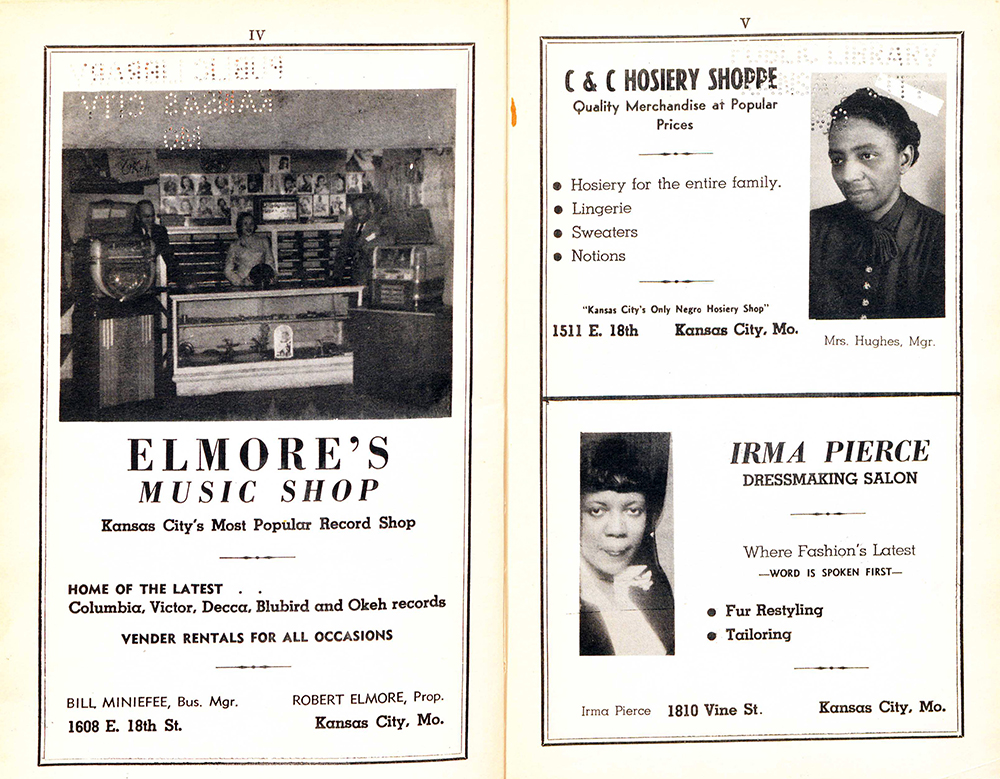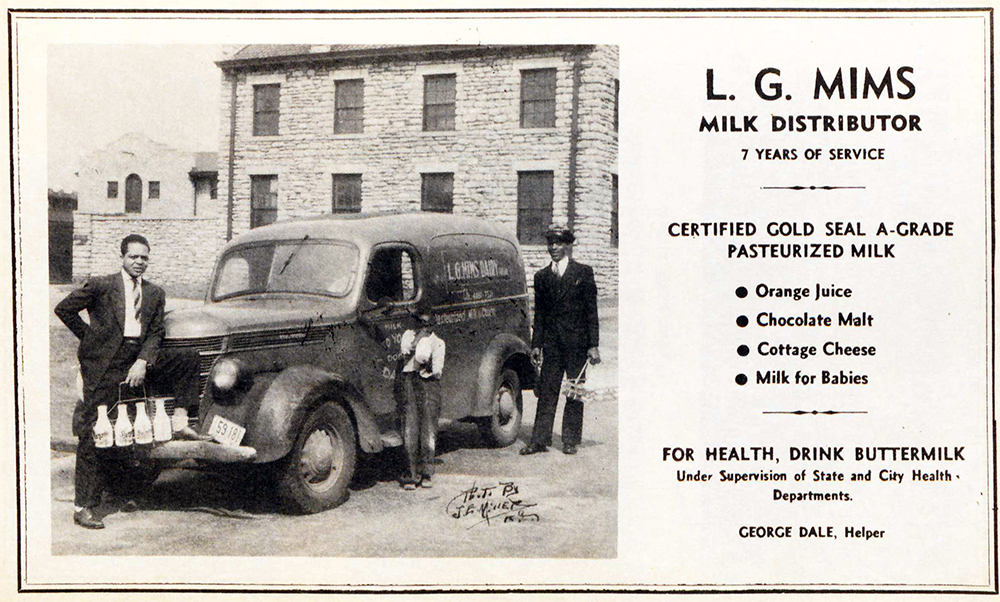A City Directory for Kansas City’s Black Communities
Thanks to the 2018 film "Green Book," many know of "The Negro Motorist Green Book," published annually for 30 years beginning in 1936. The guidebooks provided Black travelers a list of businesses, restaurants and lodgings that would welcome them while traveling. For those interested in learning more, the New York Public Library has made 23 editions of the "Green Book" digitally accessible here.
While there are no copies of the “Green Book” within Missouri Valley Special Collections, we believe we have something equally interesting. In the early 1940s, Kansas City’s Negro Chamber of Congress worked with Scott Directory Publishers to create the Kansas City Negro City Directory. The book provides a fascinating glimpse into Kansas City’s Black communities at a moment just prior to a period of tremendous change.
In the years following World War II, many American cities embraced Urban Renewal, and consequently, some of its disastrous effects. This period of postwar redevelopment brought about modern downtown buildings, accelerated freeway construction across the country and facilitated the expansion of suburban communities.

However, many Black neighborhoods were unduly impacted by Urban Renewal programs. In Kansas City, much of the historic Black neighborhood centered upon 18th and Vine was declared blighted, rezoned for light industry and cleared for redevelopment projects. Other neighborhoods shared similar fates or were carved up by new highways designed to alleviate traffic congestion for suburban commuters.
This 1942-1943 publication provides a window into the lives of the people and businesses that made these neighborhoods thrive.
The directory was created by T.P. and Irene Scott, the namesakes of Scott Directory Publishing. An advertisement in a 1942 edition of the Kansas City Star states that the information was gathered by “actual canvass,” a task that must have required countless hours to complete.

The directory contains two complete A-Z listings of names and businesses, and one supplementary list. To save space, the publishers used numerous abbreviations that can help researchers learn about the people who made up Kansas City’s Black neighborhoods.

The legend from the directory shown above can be used to decode the abbreviations. The entry for Kansas City political leader and civil rights activist Leon Jordan is provided on the right to illustrate. Using the abbreviations, it can be determined that Jordan was the husband in the home (h), that he was a police officer, that he lived at 2745 Garfield Avenue, that his wife (w) was Orchid Jordan, and that she worked in the home (hw). Other common abbreviations can help determine home ownership (ho), rental status (r), car ownership (co), etc.
In addition to listing residents, the directory contains two categorized business listings that provide associated names, addresses and telephone numbers. Several larger advertisements for some of Kansas City’s Black owned businesses are included.


The Kansas City Negro City Directory can be accessed here ».

